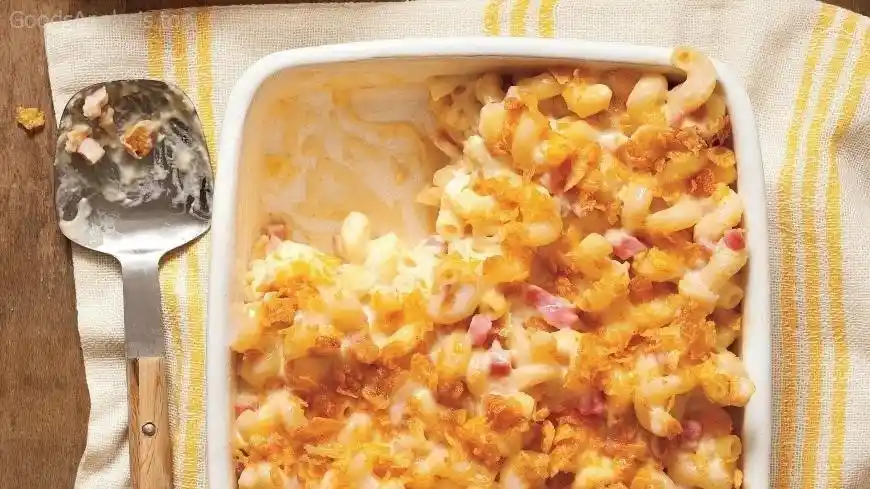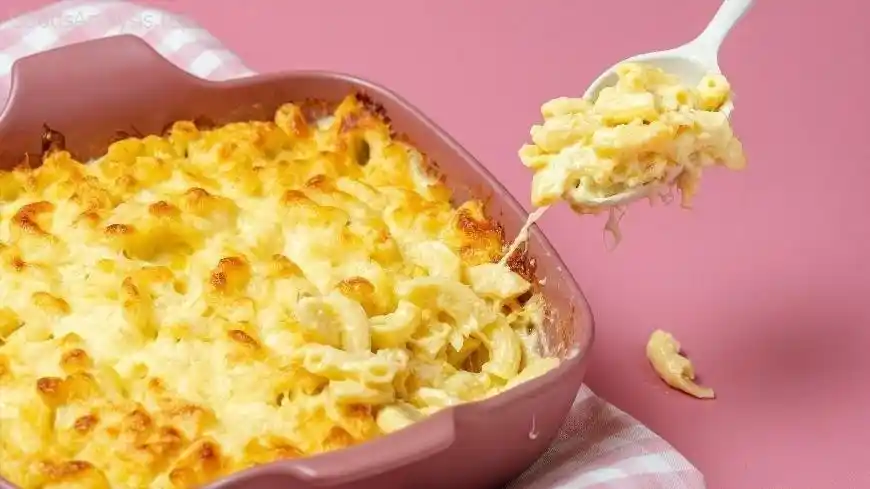Mac and cheese. Two words that have the power to conjure up warm, comforting memories of childhood, family gatherings, or late-night cravings. But how do you make the perfect mac and cheese? It’s more than just throwing some cheese and pasta together. Whether you’re a seasoned cook or someone who’s just looking to impress, this guide will walk you through the steps of making a creamy, cheesy dish that’s sure to satisfy your taste buds. Let’s take a deep dive into the ingredients, techniques, and even some health considerations — because, as with anything in life, balance is key.
The Basics of Mac and Cheese
At its core, mac and cheese is a simple dish: pasta and cheese sauce. But when you get down to it, the “perfect” mac and cheese comes from knowing a few key techniques and using the best ingredients.
Ingredients:
- Pasta: The most commonly used pasta for mac and cheese is elbow macaroni, but feel free to experiment with other shapes like shells, cavatappi, or even penne. The key is to choose a pasta that will hold sauce well.
- Cheese: Sharp cheddar is the classic, but other cheeses like Gruyère, fontina, mozzarella, or Parmesan can add depth and complexity to the flavor. Combining two or more types of cheese often creates the best balance between creaminess and sharpness.
- Milk and Cream: For a creamy, smooth texture, a combination of whole milk and heavy cream is ideal. Some people use just milk or just cream, but for richness without being too heavy, the combination is your best bet.
- Butter: Butter adds flavor and helps in creating the roux (the flour and fat base for the sauce).
- Flour: This is used to make the roux that will thicken the sauce. All-purpose flour works best.
- Seasonings: Salt, pepper, and a pinch of mustard powder or paprika can elevate the flavor of the sauce. For an extra zing, a dash of hot sauce or garlic powder can be added.

The Process:
- Boil the Pasta: Start by boiling the pasta in salted water. Be sure to cook it al dente (firm to the bite), as it will continue to cook when mixed with the sauce. Drain the pasta and set it aside, reserving a bit of the pasta water in case you need it to adjust the sauce’s consistency.
- Make the Cheese Sauce: This is the heart of mac and cheese. Begin by making a roux. In a large pot, melt the butter over medium heat. Stir in the flour and cook it for about 1-2 minutes until it becomes a golden color. Gradually whisk in the milk and cream, and continue to whisk to avoid any lumps. Cook the mixture until it thickens — you want it to coat the back of a spoon.
- Add the Cheese: Once your sauce has thickened, remove the pot from the heat and slowly add your shredded cheese, stirring continuously until it’s melted and smooth. If the sauce is too thick, add a little of the reserved pasta water to adjust the consistency.
- Combine Pasta and Sauce: Add your drained pasta to the sauce and stir gently to coat each piece. If you prefer a baked version, transfer the mixture to a greased baking dish and top it with extra cheese or breadcrumbs for a crispy topping. Bake at 350°F (175°C) for about 20 minutes or until golden and bubbly.

Variations to Consider:
- Baked Mac and Cheese: For an added texture, you can bake your mac and cheese with a crunchy breadcrumb topping. Use buttered panko breadcrumbs, or combine them with grated Parmesan for an extra cheesy finish.
- Spicy Mac and Cheese: Spice things up with jalapeños, hot sauce, or even a sprinkle of cayenne pepper.
- Veggie Mac and Cheese: Add vegetables like spinach, broccoli, or tomatoes for some color and nutrients.
- Protein-Packed Mac and Cheese: Stir in cooked bacon, sausage, or even chicken for a hearty meal.

The Healthier Side of Mac and Cheese
Let’s not pretend mac and cheese is a health food (though we’d all love it to be). It’s rich, comforting, and undeniably delicious — but also quite caloric and high in fat. That doesn’t mean you can’t make some healthier versions though.
- Use Whole Wheat Pasta: If you’re looking for a fiber boost, try using whole wheat pasta or a gluten-free version. It’ll alter the texture a little, but it’s a great option for those with dietary needs.
- Lower-Fat Dairy: If you’re concerned about calories, you can substitute low-fat milk and reduce the amount of butter. Just be careful not to sacrifice too much of the richness in the sauce.
- Add Vegetables: As mentioned, tossing in some greens or roasted vegetables not only adds nutrients but can help balance out the richness of the cheese sauce.
- Smaller Portions: One simple trick is to make smaller portions and balance your meal with a side salad or grilled chicken. You can enjoy mac and cheese without overindulging.

While it’s not exactly a health food, enjoying mac and cheese in moderation can still be part of a balanced diet. If you’re concerned about cholesterol or other health issues, it might be best to indulge every once in a while rather than making it a weekly habit.
The Science Behind Perfecting Mac and Cheese
Believe it or not, making mac and cheese isn’t just about throwing things together and hoping for the best. There’s some science involved — especially when it comes to the cheese sauce.
- Emulsification: The process of making a smooth, creamy sauce without separating relies on emulsification. When you melt cheese into a hot, thickened mixture (like the roux), the fat in the cheese combines with the milk and butter to form a creamy, stable sauce. This is where the milk fat and protein come into play.
- Cheese Selection: Not all cheeses melt the same. Some cheeses, like mozzarella and Gruyère, are known for their smooth melt, while others like Parmesan may separate more easily. Combining different types of cheese creates the perfect balance of texture and flavor.

A Few Words of Caution
Mac and cheese is an indulgence, and like all indulgences, it should be enjoyed in moderation. Too much cheese and cream can leave you feeling sluggish, and if you have lactose intolerance or a dairy allergy, it’s best to either skip the dish or use dairy-free alternatives. Keep in mind that the typical mac and cheese recipe is high in saturated fat, so it may not be suitable for those with heart health concerns.
Additionally, people with gluten sensitivity can opt for gluten-free pasta and ensure that any store-bought ingredients, like cheese, don’t contain hidden gluten.
What People Are Saying About Mac and Cheese
- Maria, 34, Spain
“I love making mac and cheese with a twist — adding roasted peppers and spicy chorizo. It’s a hit every time with my friends, though my non-spicy friends have to be warned!” - John, 60, United States
“I’ve been making mac and cheese for decades, and I’ve learned the key is to use real cheese, not the pre-shredded kind. It makes all the difference in the world. Oh, and don’t skip the roux!” - Lian, 25, China
“I usually go for a baked mac and cheese. The crunchy top is my favorite part! I also add some bok choy or shiitake mushrooms for an Asian-inspired version.” - Carlos, 45, Brazil
“I’m not a huge fan of the creamy version, so I make mine with a tomato-based sauce and a touch of garlic. It’s not the traditional mac and cheese, but it’s a delicious alternative!” - Tanya, 54, Australia
“My grandkids love when I make mac and cheese, especially with a bit of mustard powder. It’s an old family recipe, and I’m always surprised at how much they enjoy it!”

Final Thoughts
Mac and cheese is a versatile dish that has captured hearts across the world in many forms. Whether you like it rich and creamy, light and healthy, or with a bit of a twist, there’s a version out there for everyone. It’s not only about the recipe but the love and care you put into it. So, go ahead, get your cheese and pasta ready, and create your own mac and cheese masterpiece. Just remember to enjoy it — every cheesy bite!









